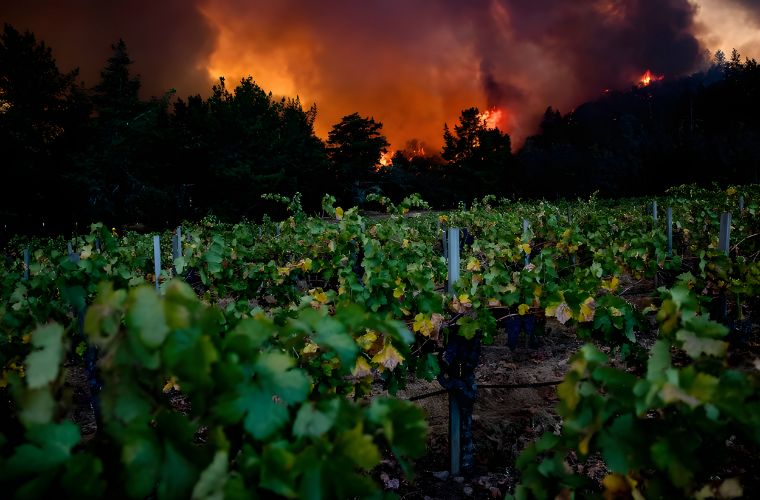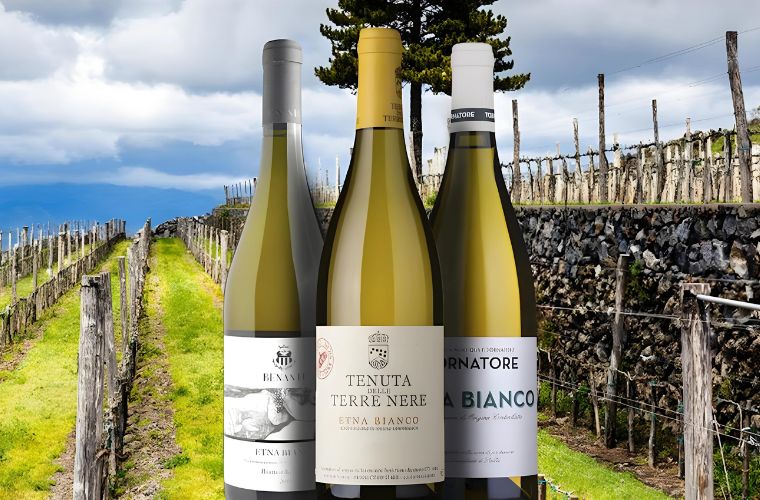Winner Announcement
June 10, 2025
Judging Date
May 18, 2026
Registration Opens
August 1, 2025

The global wine industry has been undergoing a fascinating transformation in viticulture's vast and diverse landscape. As wine enthusiasts seek unique flavors and authentic expressions of terroir, there has been a significant surge in the popularity and recognition of indigenous grape varieties. This shift represents a departure from the dominance of international grape varieties as consumers and winemakers rediscover the charm and distinctiveness of grapes unique to specific regions. Historically, the globalization of the wine industry has led to the widespread cultivation of international grape varieties such as Cabernet Sauvignon, Chardonnay, and Merlot. However, a growing appreciation for diversity and a desire to showcase the unique character of different terroirs have sparked a renewed interest in indigenous and lesser-known grape varieties.
The rise of regional grape varieties is a win for wine enthusiasts seeking new and authentic experiences and a boon for local economies. Consumers express a growing interest in unique location-specific wines, and regions cultivating indigenous grape varieties can distinguish themselves in the global market. This phenomenon has led to increased tourism as wine lovers journey to discover the origins of their favorite regional wines. Cultivation and production of these unique varieties create jobs in vineyards and wineries and stimulate growth in related sectors such as tourism, hospitality, and retail. Visitors are drawn to experience the authenticity and distinctiveness of these local wines, injecting vitality into the region's economy.

Source: Tripadvisor
Climate change poses a formidable challenge to traditional wine regions, altering temperature patterns, precipitation levels, and overall growing conditions. In response to rising temperatures and changing weather events, winemakers increasingly turn to indigenous grape varieties that have evolved over centuries to thrive in their specific climates. These varieties often better suited to local conditions offer sustainable and resilient solutions to the challenges posed by a warming planet.

Source: The Atlantic
One notable example of this adaptation is the introduction of Voltis in Champagne, a hybrid grape incorporating DNA from Vitis Vinifera, Vitis Berlandieri, Vitis Rupestris, and Vitis Muscadinia. Renowned for its resistance to fungi and adaptability to the microclimate, Voltis is believed to be entirely resistant to powdery mildew and highly resistant to downy mildew. These strategic integrations of innovative grape varieties illustrate the wine industry's commitment to sustainability and adaptation in a changing climate.
Many local grape varieties are well-suited to their native environments, requiring fewer interventions and resources. Embracing these varieties aligns with sustainable agricultural practices, promoting environmental stewardship. Cultivating indigenous grapes contributes to preserving biodiversity and ensures the longevity of vineyards, fostering a balance between economic development and environmental responsibility.

Source: WineWise
The recent rise of indigenous grape varieties is a fascinating trend in the wine world, showcasing the diversity and uniqueness of different wine regions. Here are some notable examples of areas where indigenous grape varieties are experiencing a resurgence:
Xinomavro in Naoussa, Greece: A red grape variety that has gained international acclaim for its complex profile, featuring notes of dark fruits, tomatoes, and a characteristic tannic backbone and showcasing its ability to express the unique terroir of northern Greece.
Saperavi in Chikaani, Georgia: Saperavi is a red grape variety native to Georgia and is a crucial player in the country's winemaking heritage. Known for its deep color and robust character, Saperavi wines often exhibit dark fruit flavors, earthiness, and a unique tannic structure.
Carricante in Sicily, Italy: Carricante thrives in Mount Etna's volcanic soils, imparting wines with vibrant acidity and a distinctive mineral character. It is usually blended with indigenous varieties like Cataratto, crafting the famous Etna Bianco. These blends showcase Sicily's diverse terroir, featuring Carricante's refreshing citrus and floral notes, reinforcing the region's winemaking heritage.

Source: Taste Atlas
Malvasia in Istria, Croatia: Thriving in the Mediterranean climate, Malvasia yields aromatic and nuanced white wines. Istrian winemakers skillfully craft these wines, embodying the terroir and contributing to the region's reputation for producing distinctive and high-quality expressions of Malvasia.
Chasselas in Switzerland: Chasselas is a white grape flourishing in Switzerland’s diverse terroirs that yield crisp and aromatic wines. Its subtle notes and adaptability make it a foundation of Swiss viticulture, contributing to its reputation for crafting nuanced and elegant white wines.
Bacchus in England: A German white grape variety found a notable home in England's cool climate, producing crisp white wines with distinct grapey, elderflower, and citrus characteristics. This complex grape is a cross of Silvaner, Riesling, and Müller-Thurgau. Its success in English vineyards underscores the nation's prowess in crafting unique, aromatic wines.

Source: Domaine Dardagny
The future of these regional grape varieties appears promising and pivotal in the evolving landscape of the wine industry. As consumers increasingly seek an authentic and diverse tasting experience, winemakers turn to local varieties that reflect a sense of place and cultural heritage. This exploration extends to remote vineyards, uncovering hidden gems and introducing novel expressions in winemaking. Recognizing the value of preserving and promoting such varieties is crucial for a vibrant and resilient wine landscape. Embracing diversity safeguards viticultural heritage contributes to sustainability amid climate change, and enriches the sensory tapestry of wines. Appreciating indigenous grapes deepens the connection with the world of wine, fostering a sense of wonder and gratitude. The collective effort to discover, preserve, and celebrate these treasures emphasizes a shared responsibility among wine lovers, producers, and conservationists, ensuring the continued richness of global viticulture for future generations.
[[relatedPurchasesItems-61]]
Header Image Source: Intovino
Article By Tushar Anand, Beverage Writer & Sommelier
Enter your Wines now and get in front of top Sommeliers, Wine Directors, and On-Premise Wine Buyers of USA.
